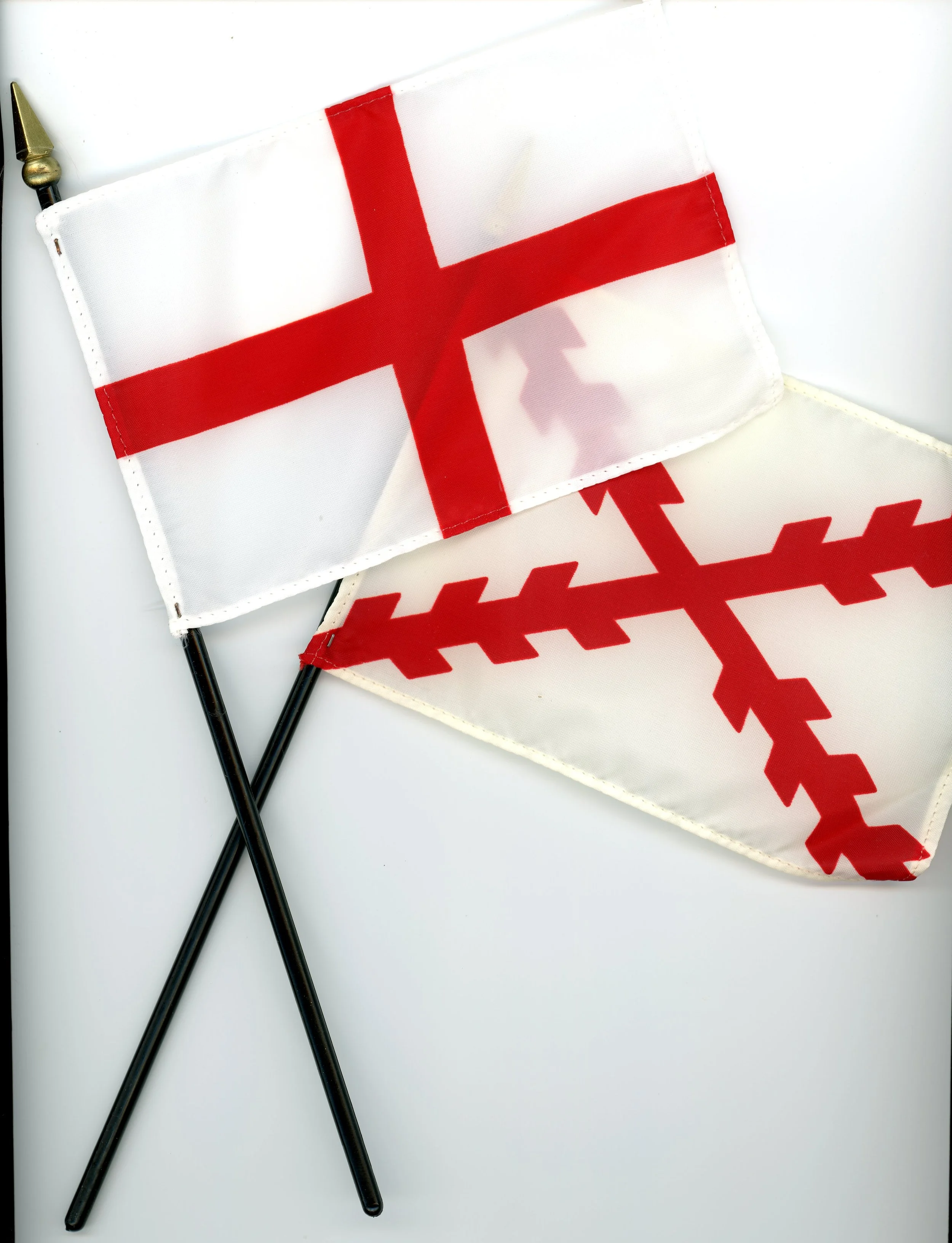Sea Dogs
Robert Lynch, a Guild member for over 60 years, was well versed with maritime history. His Master of Arts in Maritime History was awarded by Stanford University. This article is the last of his many contributions to the Guild.
Sir John Hawkins, Sir Francis Drake, and Thomas Cavendish were some of Elizabeth’s most successful maritime adventurers.
Wikimedia Commons Image
The flag with the horizontal and vertical straight lines is the Cross of St. George as was carried on Drake's Golden Hind. The diagonally lined flag is the Cross of Burgundy that was on the San Agustin. It is also called the Ragged Cross.
DNG File Image
From the time of William I, both the Normans and later Royal houses were concerned about the possibility of some warlord launching an attack on England. To fend off this threat, the kings and lords agreed that the ports of southeast England would provide a seaboard defense. The Cinque Ports were named and the lords of those manors could write off the expense of maintaining ships and boats for this purpose. This concept of private ship ownership for use by the government has continued to this day.
In 1577 when Drake’s ships were being fitted for his voyage, it was necessary to get funding anywhere the sponsors could find it. We know that while many wealthy Englishmen invested in such voyages, the investment was very risky and there were few Englishmen who were prepared to invest on their own. Almost anyone could invest, but someone with wealth like Elizabeth Tudor was required to put up the kind of money needed to outfit a ship the size of the Pelican. Five vessels of different sizes were planned and they had to be bought and ships papers had be prepared that indicated not only ownership but sponsorship, too. When most of the business end of the voyage was completed, there were still more expenses in the initial fitting out and the added refit after the storm drove the ships back to port. The Crown was the logical place to apply for this expense. The Crown became the source of money of last resort, but it turned out to be the principal investor.
King Henry VIII was keenly aware that England was vulnerable to invasion and that the only practical way to prevent an invasion would be by sea. A naval force was necessary to accomplish this. By the time he died, he had established an admiralty and a small fleet. A lot of progress was lost during the tumult around a boy king (Edward VI) and a queen (Mary I), who was more set on re-establishing the Catholic Church than protecting the country from invasion.
When Elizabeth became queen, she set about to secure England from attack by enemies on and off the island. As her power increased so did the power of the Hawkins clan and Sea Dogs they sailed with. Attention to ship design and ways to improve good sailing, seamanship, and maneuverability began at this time.
So, in 1576, the Pelican (later re-named the Golden Hind) was completed and was made ready.
by Robert Lynch January 11, 2019

